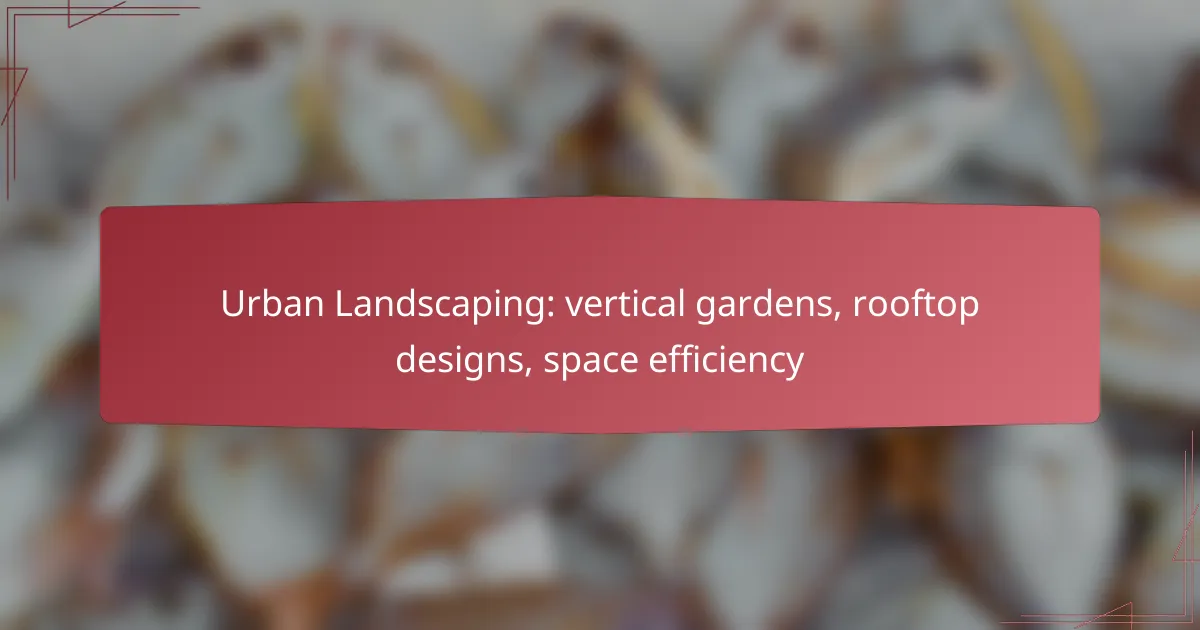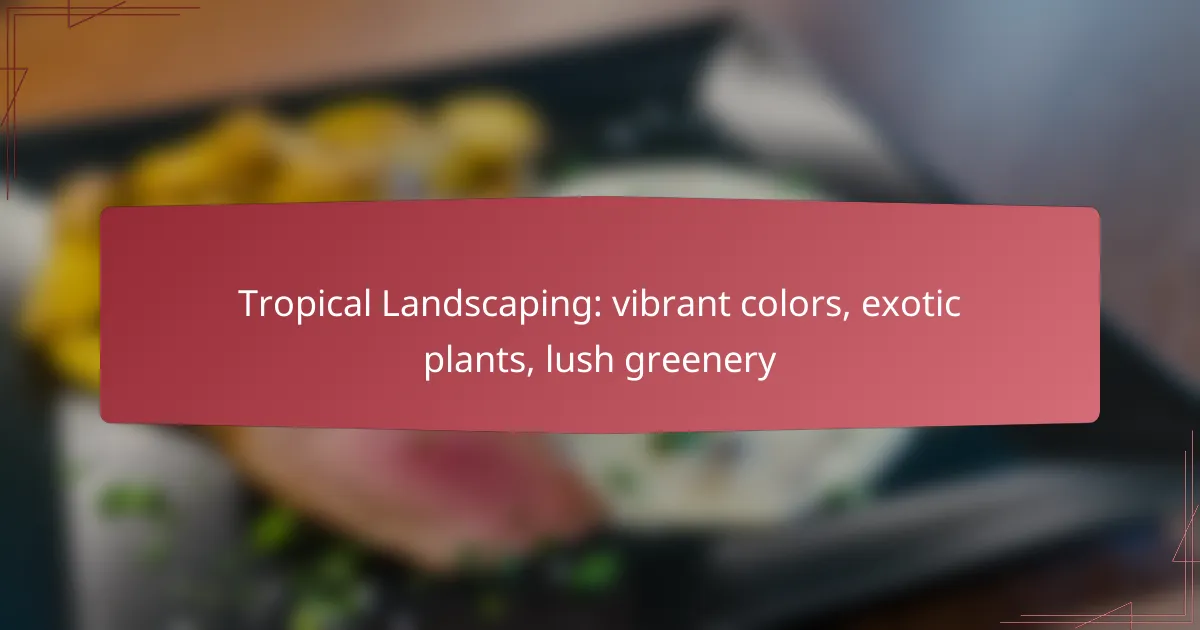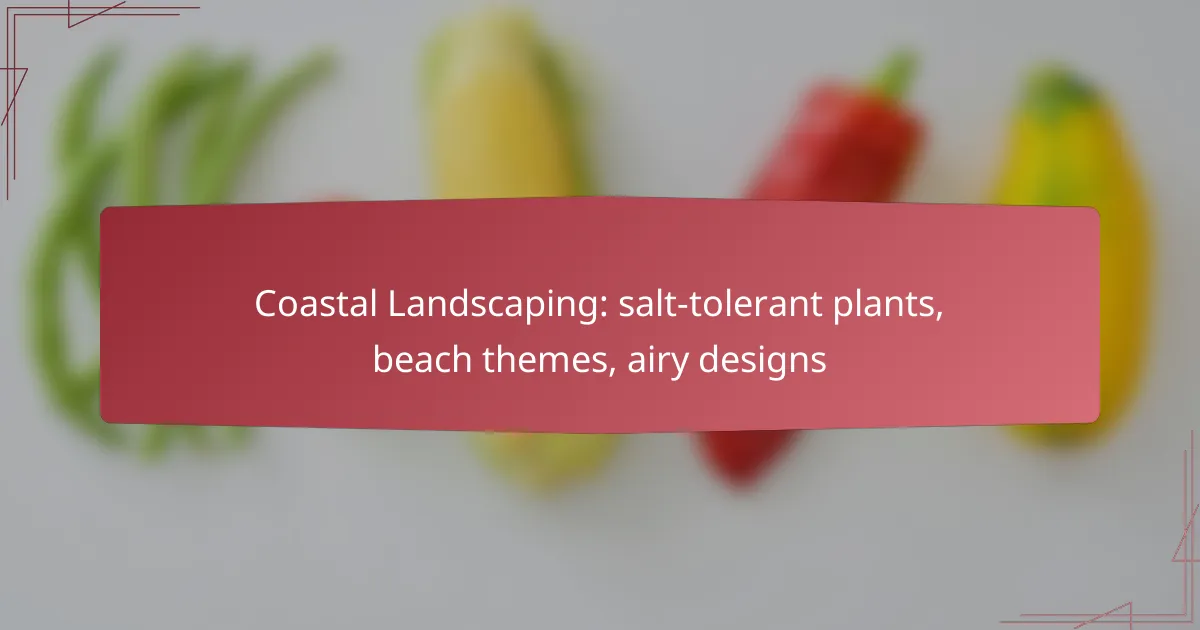Urban landscaping is transforming cityscapes through innovative designs like vertical gardens and rooftop spaces, maximizing limited areas while enhancing aesthetic appeal. These green solutions not only improve air quality and biodiversity but also contribute to the overall health and vibrancy of urban communities. By utilizing efficient planting systems, cities can create lush environments that thrive even in challenging conditions.

What are the benefits of urban landscaping in Los Angeles?
Urban landscaping in Los Angeles offers numerous advantages, including improved air quality, enhanced property value, and increased biodiversity. These benefits contribute to a healthier environment and a more vibrant urban community.
Improved air quality
Urban landscaping significantly enhances air quality by filtering pollutants and producing oxygen. Plants, particularly trees and shrubs, absorb carbon dioxide and other harmful gases, helping to mitigate the effects of urban pollution.
In Los Angeles, where air quality can be a concern, incorporating vertical gardens and green roofs can effectively reduce smog levels. A well-planned landscape can lower temperatures and create microclimates that further improve air quality.
Enhanced property value
Investing in urban landscaping can lead to a noticeable increase in property value. Properties with well-maintained gardens, green roofs, or attractive outdoor spaces often command higher prices and attract more buyers.
In Los Angeles, where real estate is competitive, the presence of greenery can make a property stand out. Homeowners should consider incorporating features like rooftop gardens or landscaped patios to enhance curb appeal and overall market value.
Increased biodiversity
Urban landscaping promotes biodiversity by creating habitats for various species, including birds, insects, and small mammals. By integrating native plants into landscaping designs, urban areas can support local wildlife and contribute to ecological balance.
In Los Angeles, using drought-resistant and native plants can attract beneficial pollinators while reducing water consumption. This approach not only fosters a thriving ecosystem but also aligns with California’s sustainability goals.
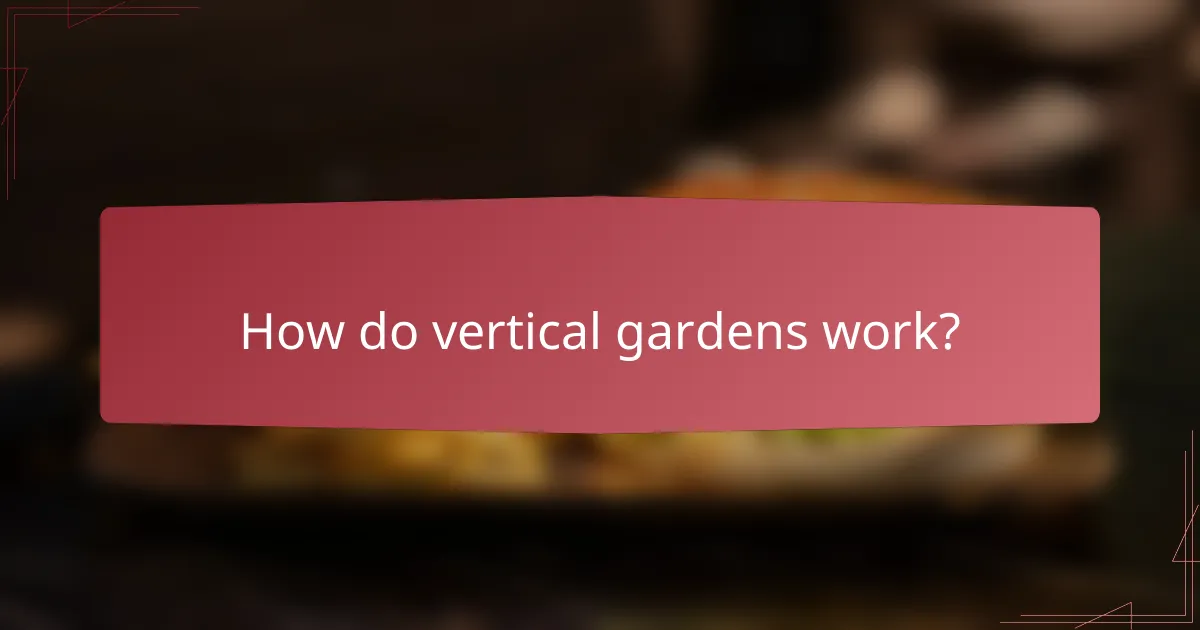
How do vertical gardens work?
Vertical gardens utilize a structure to support plants in a vertical orientation, allowing for efficient use of space and enhancing urban aesthetics. They typically incorporate systems for water and nutrient delivery, making them suitable for various environments, including rooftops and walls.
Soil-less growing systems
Soil-less growing systems are essential for vertical gardens, as they eliminate the need for traditional soil while providing the necessary nutrients for plant growth. Common methods include using substrates like coconut coir, rock wool, or perlite, which offer good drainage and aeration.
These systems can be designed to retain moisture and nutrients, reducing the frequency of watering. When implementing a soil-less system, it’s crucial to monitor pH levels and nutrient concentrations to ensure optimal plant health.
Hydroponic technology
Hydroponic technology is a popular method in vertical gardens, where plants grow in a nutrient-rich water solution instead of soil. This approach allows for faster growth rates and higher yields, making it ideal for urban settings with limited space.
There are various hydroponic systems, such as nutrient film technique (NFT), deep water culture (DWC), and aeroponics. Each system has its advantages, so selecting one depends on factors like available space, budget, and the types of plants being cultivated.
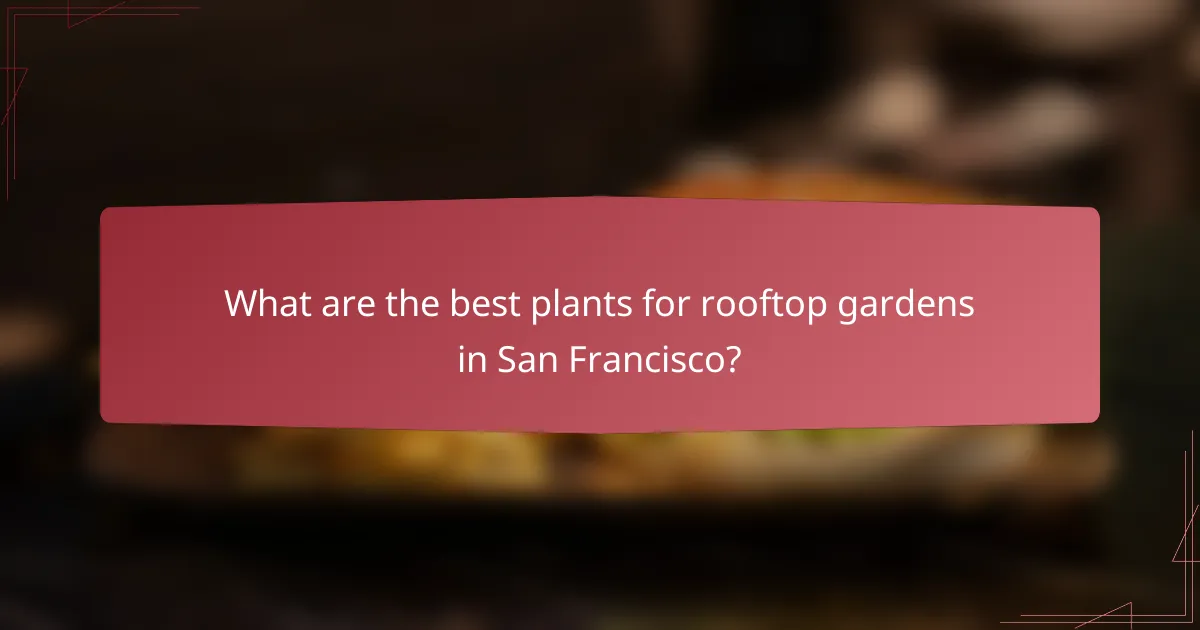
What are the best plants for rooftop gardens in San Francisco?
The best plants for rooftop gardens in San Francisco are those that thrive in the city’s unique climate, which includes cool summers and mild winters. Consider plants that can withstand wind exposure and limited soil depth, while also providing aesthetic appeal and functionality.
Succulents
Succulents are an excellent choice for rooftop gardens in San Francisco due to their drought-resistant nature and low maintenance requirements. Varieties like Sedum, Echeveria, and Aloe can thrive in the city’s sunny conditions and require minimal watering.
When selecting succulents, ensure they are placed in well-draining soil and receive adequate sunlight. Grouping different types can create visual interest while maximizing space efficiency.
Herbs
Herbs such as basil, rosemary, and thyme are ideal for rooftop gardens, offering both culinary benefits and fragrant greenery. They typically require full sun and well-drained soil, making them suitable for San Francisco’s climate.
Consider using containers or raised beds to grow herbs, which can help manage soil depth and drainage. Regular harvesting encourages growth, so plan for frequent use in cooking or as garnishes.
Native plants
Incorporating native plants into your rooftop garden can enhance biodiversity and support local wildlife. Species like California poppy, yarrow, and manzanita are adapted to the local climate and soil conditions, making them resilient choices.
Using native plants can also reduce water usage and maintenance needs. Ensure that these plants are grouped according to their water and sunlight requirements to create a sustainable and thriving rooftop environment.
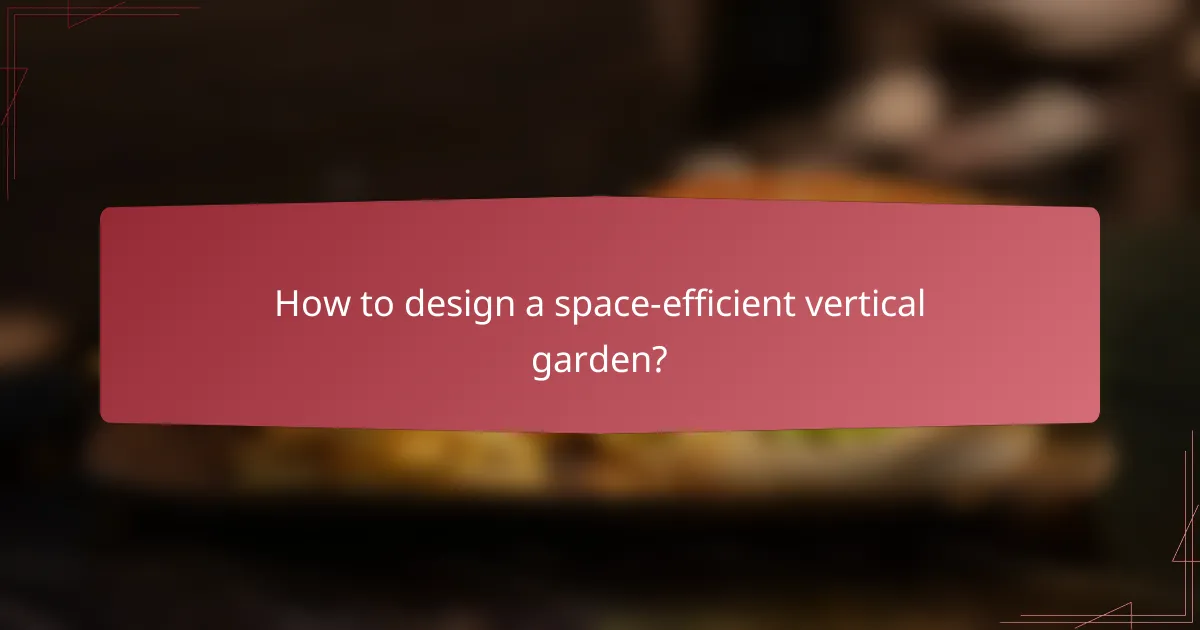
How to design a space-efficient vertical garden?
Designing a space-efficient vertical garden involves selecting the right structures and optimizing sunlight exposure. These elements are crucial for maximizing plant health and aesthetic appeal in limited spaces.
Choosing the right structure
Selecting an appropriate structure is essential for a vertical garden’s success. Options include wall-mounted planters, freestanding frames, and modular systems that can be customized to fit various spaces. Consider materials like wood, metal, or recycled plastics, which can influence durability and maintenance.
When choosing a structure, ensure it can support the weight of the plants and soil. For instance, a wall-mounted system should be securely anchored to prevent damage. Additionally, look for designs that allow for easy access to plants for watering and maintenance.
Maximizing sunlight exposure
To ensure healthy growth, it’s vital to maximize sunlight exposure for your vertical garden. Position the garden in a location that receives ample natural light, ideally 6 to 8 hours of sunlight daily. If natural light is limited, consider using grow lights to supplement the light needs of your plants.
Pay attention to the orientation of the garden; south-facing walls typically receive the most sunlight. Use reflective materials around the garden to enhance light distribution. Regularly monitor plant growth and adjust their placement if some areas are not receiving enough light.
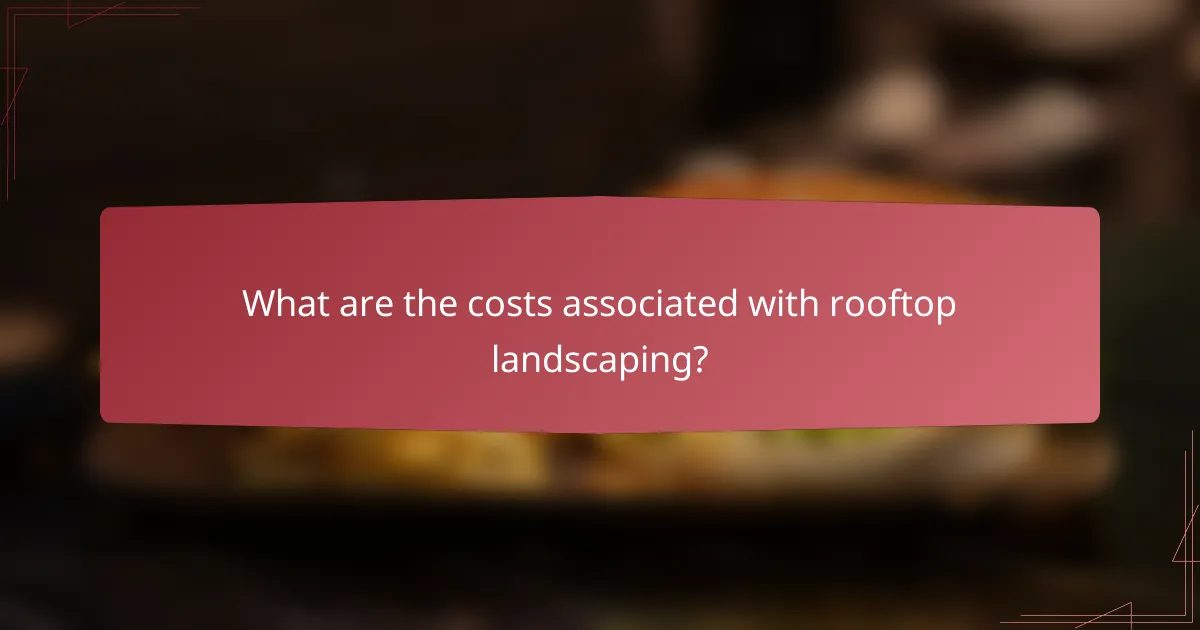
What are the costs associated with rooftop landscaping?
The costs associated with rooftop landscaping can vary significantly based on design complexity, materials used, and local labor rates. Generally, homeowners should anticipate both installation and ongoing maintenance expenses when considering a rooftop garden or green space.
Installation expenses
Installation expenses for rooftop landscaping can range from a few thousand to tens of thousands of dollars, depending on the project’s scope. Factors influencing these costs include the type of plants selected, the structural modifications needed, and whether irrigation systems are installed.
For example, a simple green roof with low-maintenance plants may cost around $15 to $30 per square foot, while more elaborate designs featuring a variety of plants, seating areas, and water features can exceed $50 per square foot. It’s essential to obtain multiple quotes from local contractors to ensure competitive pricing.
Maintenance costs
Maintenance costs for rooftop gardens typically range from a few hundred to several thousand dollars annually. Regular upkeep includes watering, pruning, and replacing dead plants, which can add up over time.
Homeowners should budget for at least $1 to $3 per square foot per year for maintenance services. Additionally, consider potential costs for seasonal clean-ups and pest control, which can further impact overall expenses. Establishing a maintenance plan with a local landscaping service can help manage these ongoing costs effectively.
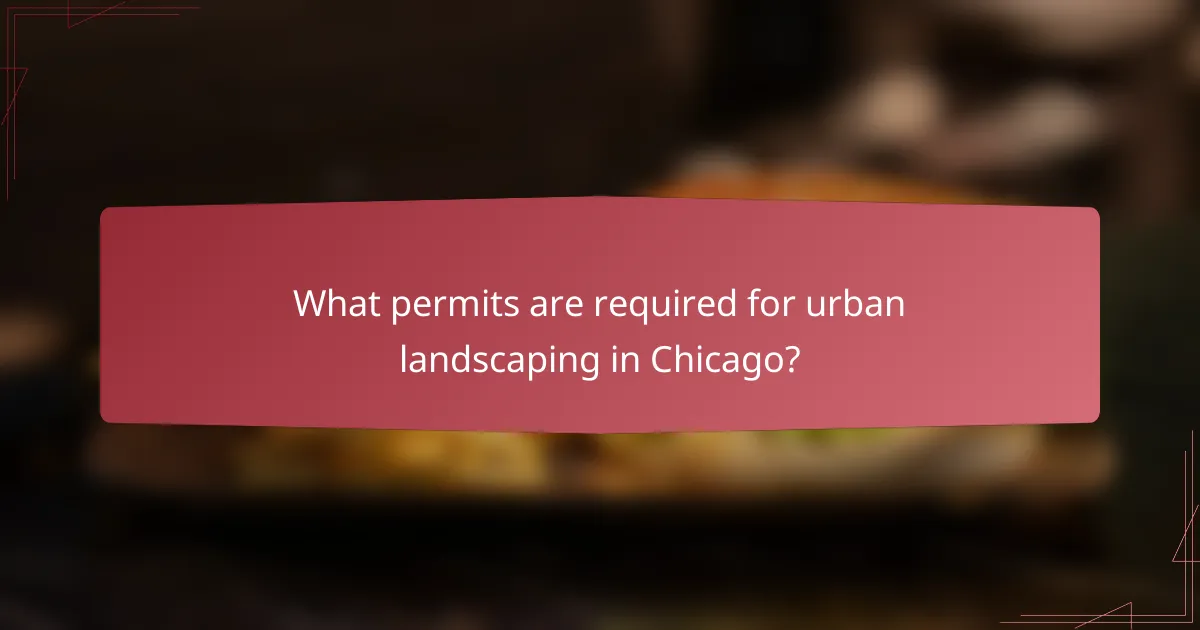
What permits are required for urban landscaping in Chicago?
In Chicago, urban landscaping projects typically require several permits to ensure compliance with local regulations. These may include building permits and environmental assessments, depending on the scope and nature of the landscaping work.
Building permits
Building permits are essential for any significant structural changes, including vertical gardens or rooftop designs. The City of Chicago requires these permits to ensure that the project meets safety and zoning regulations.
To obtain a building permit, you will need to submit detailed plans of your landscaping project, including structural calculations and design specifications. It’s advisable to consult with a licensed architect or engineer to ensure all requirements are met.
Environmental assessments
Environmental assessments may be necessary for urban landscaping projects that could impact local ecosystems or waterways. These assessments evaluate potential environmental effects and ensure compliance with city and state regulations.
In Chicago, if your project involves significant land alteration or the use of certain materials, you may need to conduct an environmental review. This process typically includes submitting documentation and may take several weeks, so planning ahead is crucial.
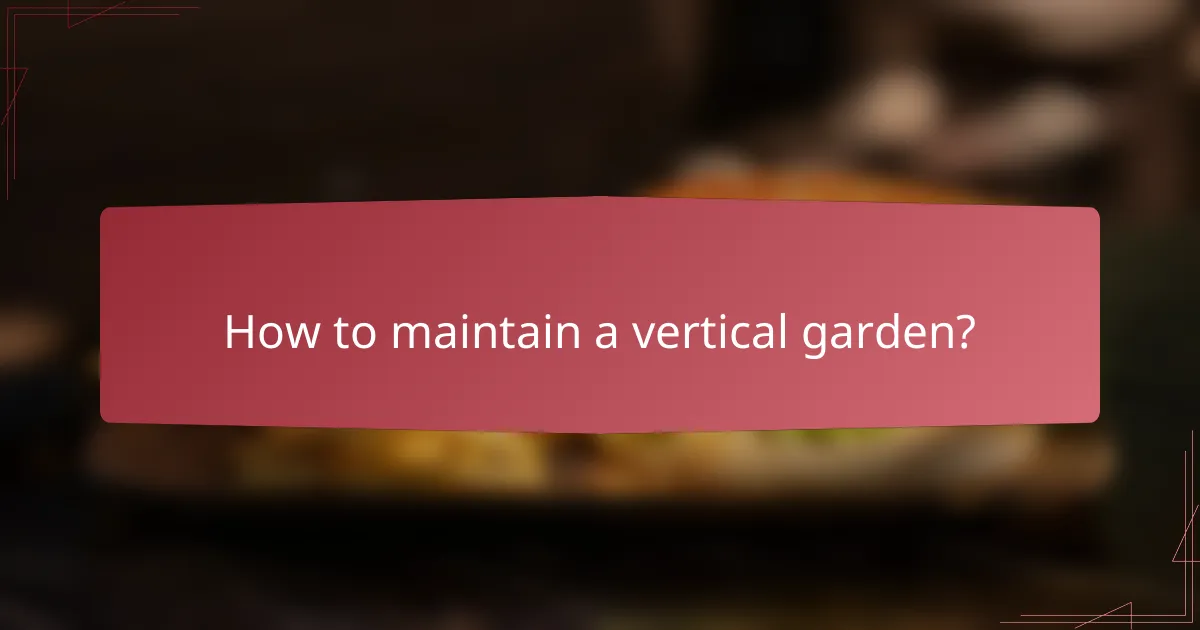
How to maintain a vertical garden?
Maintaining a vertical garden involves regular care to ensure plants thrive in their confined spaces. Key aspects include proper watering, nutrient management, and pest control to keep the garden healthy and vibrant.
Regular watering schedules
Establishing a regular watering schedule is crucial for the health of a vertical garden. Depending on the plant types and local climate, watering may be needed daily or every few days, especially in warmer months.
Consider using a drip irrigation system to automate watering, which can help maintain consistent moisture levels. This method reduces water waste and ensures that plants receive adequate hydration without over-saturating the soil.
Monitor the moisture levels in the soil regularly. A simple check with your finger can help determine if the soil is dry or damp. Adjust your watering frequency based on seasonal changes and the specific needs of your plants to avoid common pitfalls like root rot or dehydration.
